Nic Nicosia's most recent body of work, Space Time Light, consisted of photographs of rooms he built. The rooms appeared to be square. The viewer saw the floor, three walls and the ceiling. The viewer was more-or-less standing where the fourth wall would be.
At Hiram Butler Gallery, Nicosia shows work from a new series of photos of rooms, I See Light. Additionally, he has used two of the gallery spaces as room-sized installations. When you walk into the gallery, you see Wall Paper, a three-walled room installation by Nicosia. Each of the walls is covered with Chromalux paper. (I didn't have a wide enough lens on my camera to capture all three walls at once.) This black paper is attached to the wall with black tacks. But because the paper is highly reflective and buckles slightly (I'm guessing because of changes in humidity), the box isn't utterly black. The viewer sees seams and reflections.
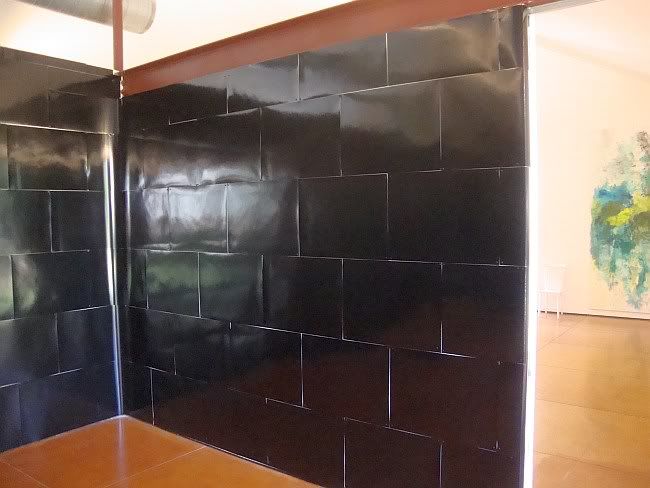
Nic Nicosia, Wall Paper, Chromolux paper with black thumbtacks, site specific installation, 20112
Because the room is covered with sheets of paper instead of one big piece (like Richard Serra's pieces over at the Menil), and because we can to an extent see the "seams" between the pieces of paper (where the white wall of the gallery shows through), the space of the room is emphasized. We see the parallel perspective lines receding as we would in a room made of bricks or cinder blocks. In short, this arrangement of paper on the wall emphasizes the "room-ness" or the room.
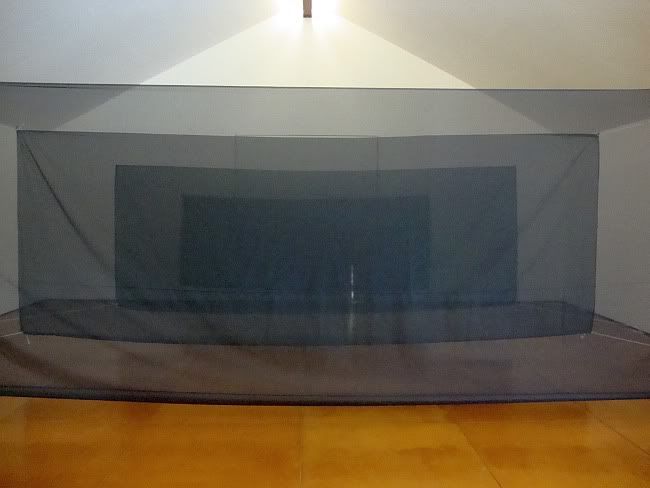
Nic Nicosia, Four Rectangles, NuVoile scrim material, cotton rope, site specific installation, 2012
Then when you turn left and walk into Hiram Butler's large gallery, you see Four Rectangles. These are four scrims hanging in a series. The largest is closest to you, the one behind it is slightly smaller, etc. We're still in a box (although the peaked roof makes it a little more complicated box than the ones Nicosia constructed for his earlier pieces). If we look at the walls, we can see the perspective of the room. But the receding scrims suggest a separate, false perspective. They create their own vanishing point as surely as Masaccio did in The Tribute Money.
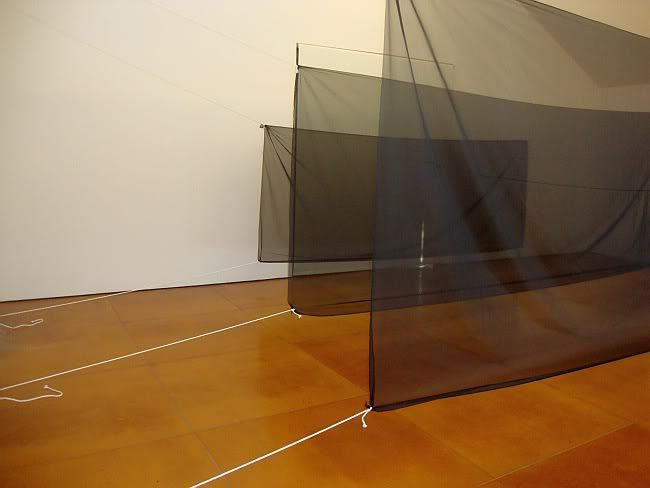
Nic Nicosia, Four Rectangles, NuVoile scrim material, cotton rope, site specific installation, 2012
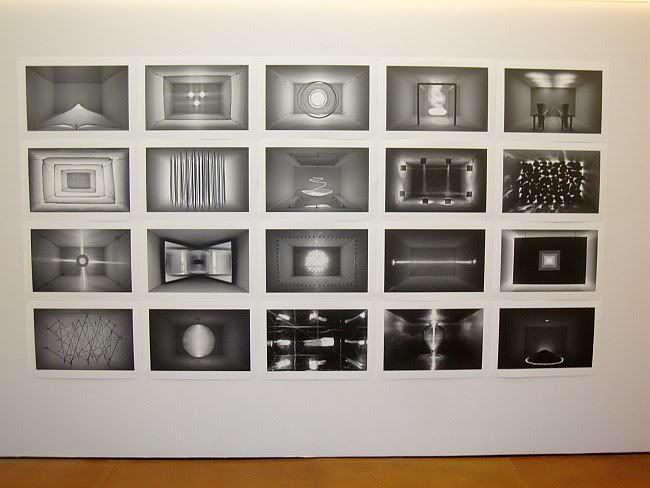
Nic Nicosia, I See Light (B+W), archival ink jet, 60" x 120", 2012
As you face Four Rectangles, I See Light (B+W) is on the wall behind you. These pieces at first remind one of his previous series, Space Time Light, where Nicosia built rooms and staged photographs within them. But if you look closely, you see that there is something different about the rooms in I See Light (B+W).
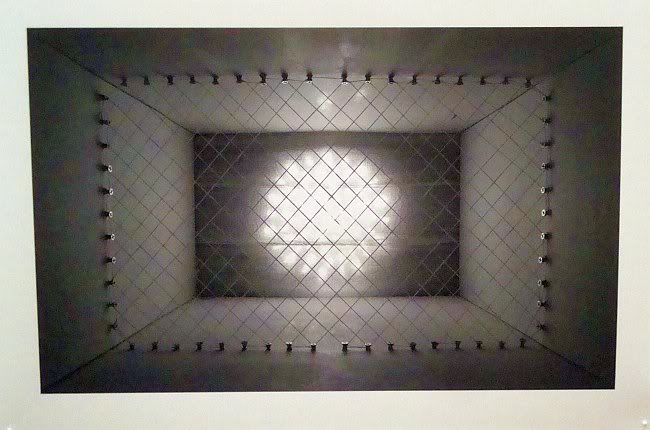
Nic Nicosia, I See Light (B+W) detail, archival ink jet, 60" x 120", 2012
As you can see, the mesh is connected to the walls, floor and ceiling by phillips head screws, and the screws seem pretty large. They seem large because the room is quite small. It's not really a room--it's a box. But the way it's photographed, that's not immediately obvious. The proportions of these boxes is the same as the rooms in Space Time Light--proportions that seem quite comfortable for people to inhabit. These boxes therefore have the feel of architectural models.
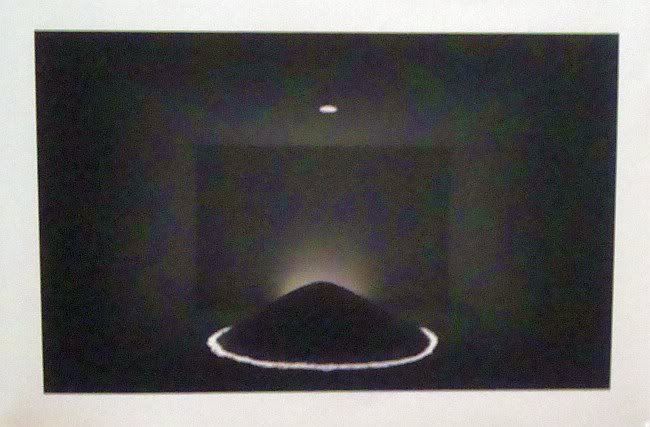
Nic Nicosia, I See Light (B+W) detail, archival ink jet, 60" x 120", 2012
What's important in these boxes are the objects and the lights. I'm told that Nicosia used phosphorescent paint to create the glowing parts of the photos. This gives them a different look than his earlier series, although he uses some similar elements (like the dirt in the photo above).
When you think of this recent work by Nicosia and the pieces in Space Time Light, you see that Nicosia is taking a specific form--the box/room--and working it out as a stage for art in multiple forms--photos of rooms, photos of boxes, and actual room installations. What he puts in those boxes/rooms is what makes them so interesting. They are like theaters (with us standing in the proscenium) or movie sound stages. But we aren't watching a drama--we are watching interventions on the room/box--dirt piled on the floor, a glowing line on all three walls, etc. Somehow, this seems just as dramatic as an actual drama.




That's my dad!
ReplyDeleteYour dad makes very interesting art
ReplyDelete